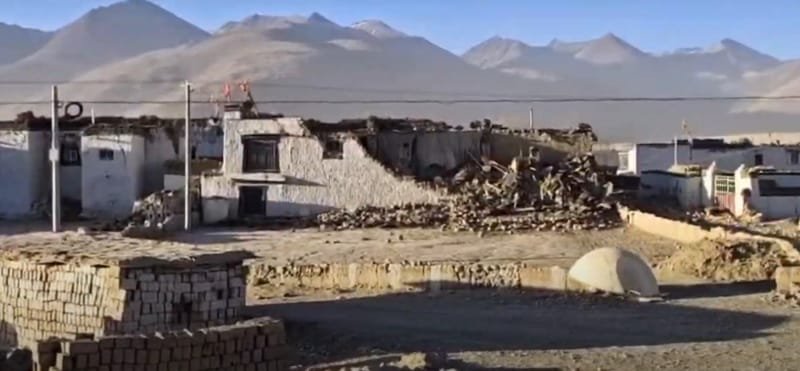Chinese authorities have confirmed the rescue of over 400 individuals trapped under rubble following a powerful 6.8 magnitude earthquake that struck the Tibetan region on Tuesday. The tremor, one of the most significant in recent years, caused widespread devastation in Tingri, a region located approximately 80 km (50 miles) north of Mount Everest.
The quake’s impact was felt across neighboring countries, including Nepal, Bhutan, and India. According to the United States Geological Survey, the earthquake was so forceful that it shifted the terrain around the epicenter by up to 1.6 meters (5.2 feet) over a distance of 80 km (50 miles).
Challenging Rescue Conditions
Temperatures in the high-altitude region plummeted to minus 18 degrees Celsius (0 degrees Fahrenheit) overnight, significantly complicating rescue operations. Experts warn that individuals trapped without shelter face the risk of rapid hypothermia, with survival times estimated at just five to ten hours under such extreme conditions.
State broadcaster CCTV reported that at least 126 people lost their lives and 188 sustained injuries on the Tibetan side. Meanwhile, neighboring Nepal reported no casualties but confirmed the destruction of a school building near Mount Everest. Fortunately, the building was unoccupied at the time.
Extensive Damage in Tibet
Preliminary assessments indicate that over 3,600 homes were destroyed in the Shigatse region, which is home to 800,000 people. Emergency response teams, comprising more than 1,800 rescue personnel and 1,600 soldiers, have been deployed to the affected areas. State media also reported that over 30,000 residents have been relocated to temporary shelters.
Footage broadcast on Chinese media depicted families seeking refuge in rows of emergency tents set up by soldiers and aid workers. Despite the rapid response, the area continues to experience aftershocks, with more than 500 recorded since the initial quake, according to the China Earthquake Networks Centre.
Historical and Religious Significance
Tingri, with a population of approximately 60,000, is Tibet’s most populous county on the border with Nepal. The Shigatse region, known as the traditional seat of the Panchen Lama, one of Tibetan Buddhism’s most revered figures, also houses the Tashilhunpo Monastery. State media confirmed that the historic monastery remains undamaged.
Condolences have poured in from global leaders, including the Dalai Lama, Japanese Prime Minister Shigeru Ishiba, Russian President Vladimir Putin, and Taiwan President Lai Ching-te. Their messages offered solidarity and support to the victims and their families.
Seismic Activity in the Region
The Himalayan region is prone to seismic activity due to the ongoing collision of the Indian and Eurasian tectonic plates. Over the past five years, 29 earthquakes with magnitudes of 3.0 or higher have been recorded within 200 km (120 miles) of Tuesday’s epicenter. This latest quake is the most devastating since a 6.2 magnitude earthquake struck northwestern China in 2023, killing at least 149 people.
China’s worst earthquake in recent history occurred in 2008, when an 8.0 magnitude quake in Sichuan claimed over 70,000 lives. As rescue efforts continue in Tibet, officials and emergency teams are racing against time to locate survivors and provide relief to the displaced population.
Conclusion
The resilience of the affected communities, coupled with the tireless work of emergency teams, has been critical in the aftermath of the devastating earthquake. While the immediate focus remains on rescue and relief, long-term efforts to rebuild and strengthen disaster preparedness in the region will be essential to mitigate future tragedies.


